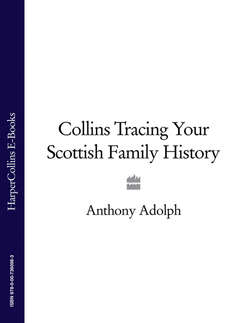Читать книгу Collins Tracing Your Scottish Family History - Ryan Tubridy, Anthony Adolph - Страница 28
Gaelic place names
ОглавлениеThe name of Ailsa Craig, an island in the Firth of Clyde, contains the Gaelic creag, meaning ‘rock’.
Some places with Gaelic names were given new names by English-speakers – Cill Rìmhinn (‘church of the king’s hill’) is now called St Andrew’s. However, whilst some names survive with their old spellings, many, as with surnames, have half-survived through Anglicization (such as Bowmore for Bogha Mòr, ‘great rock submerged in the sea’) or through direct translation, sometimes of only part of the name. Lochgilphead was Ceann Loch Gilb (where Ceann means ‘head’), for example. Known changes of parish names up to the 1790s are detailed in volume 20 of the First Statistical Account (see p. 32).
This becomes very relevant to genealogists when an ancestor gave a place of origin in a form that is no longer used. If a Gaelic place name is given, and you cannot find it, find out what it means and see if it now exists in an English translation.
Modern Ordnance Survey maps show many places in their Gaelic form, as authentically as possible. The commonest elements of place names are:
Achadh = field, such as Achiltibuie
Bad = place
Baile = township, such as Ballygrant
Caol = strait, such as Kylesku
Ceann – head, such as Kinloch
Cill = church or (monastic) cell, such as Kilbride
Creag = rock, such as Craiglarach
Druim = ridge, such as Drumpellier
Dùn = fort, such as Dunblane
Inbhir = mouth of river, such as Inverary
Na = of the
Rubha = promontory, such as Rhu
Srath = valley, such as Strathnaver
Taigh = house, such as Tighnabruaich
Badnaban meant ‘place of the women’; Cnocaneach ‘hill of the horses’ and Badnahachlais ‘place of the armpit’, presumably because it was in a narrow valley that does look rather like one.
